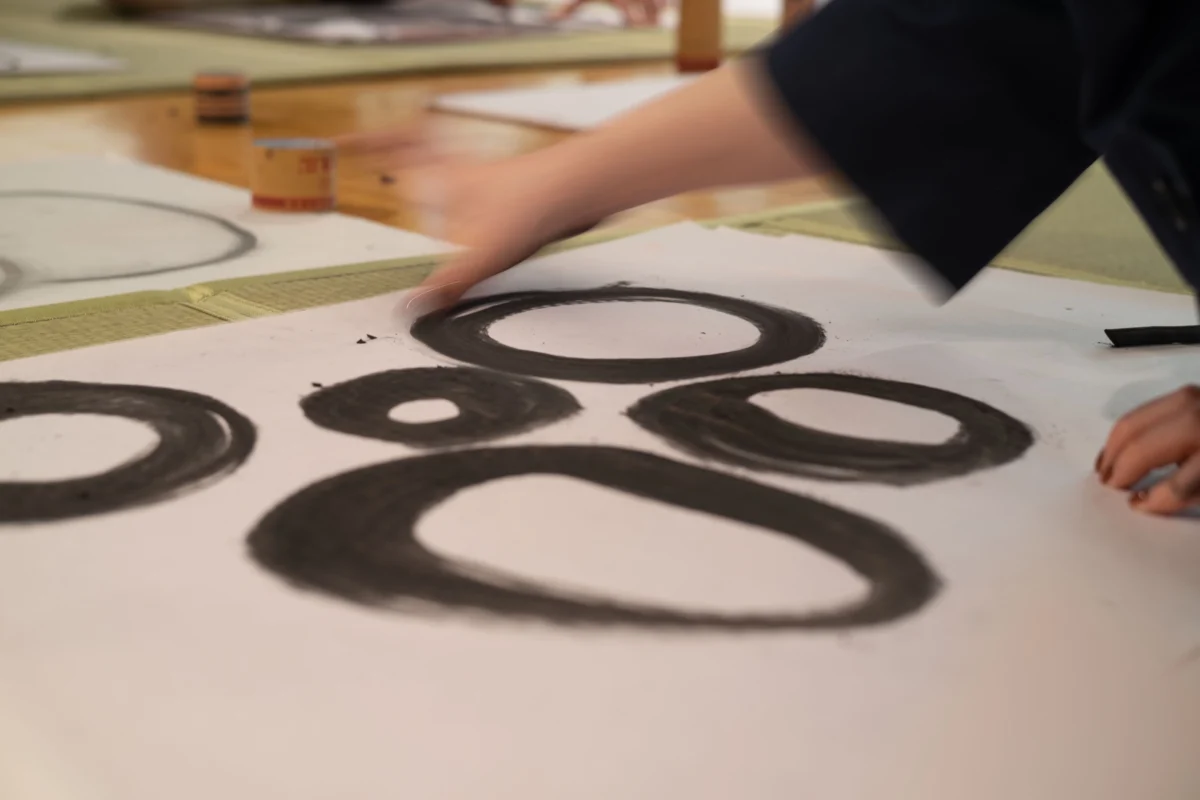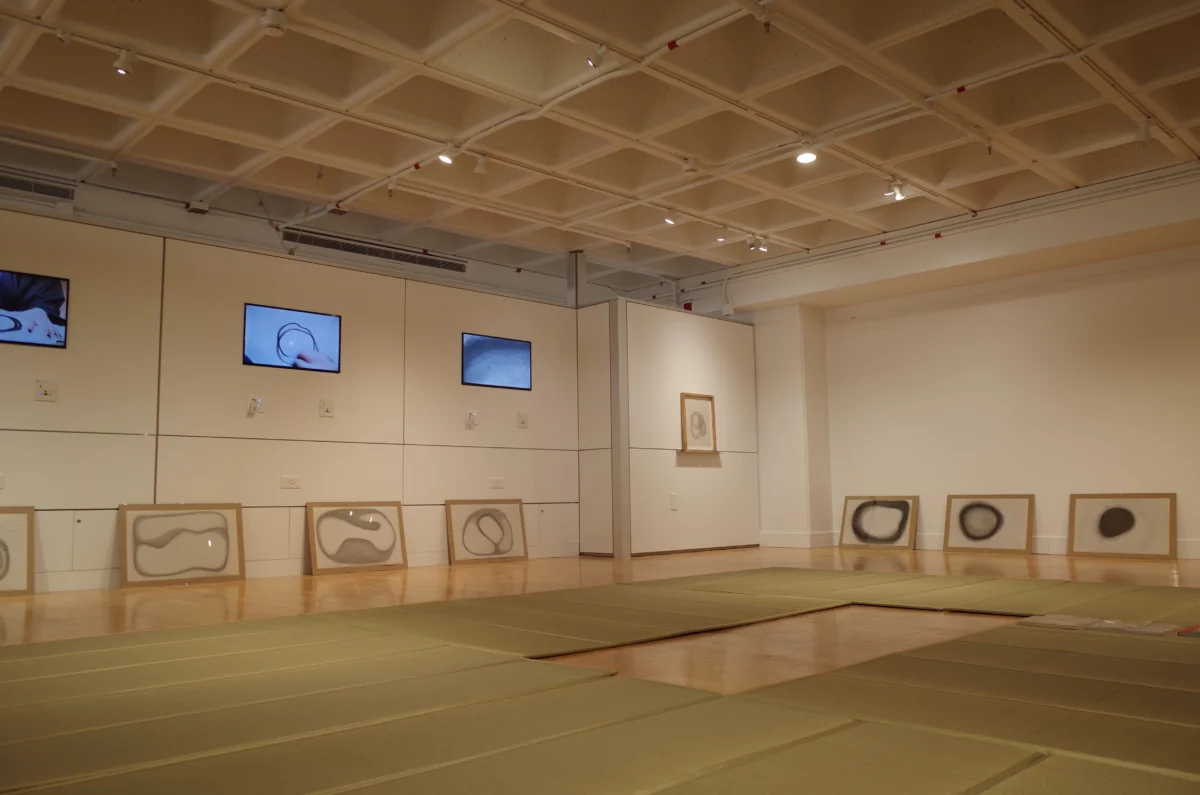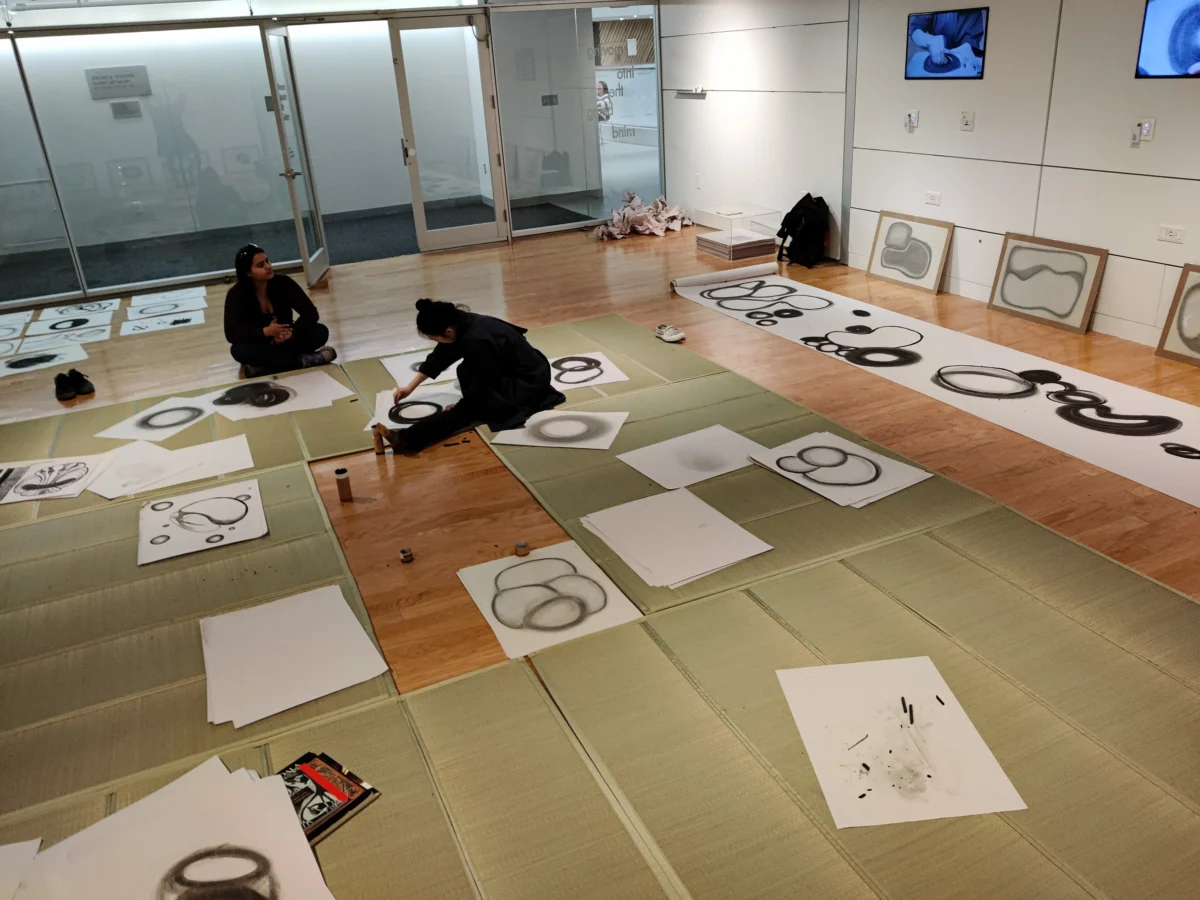An Unlikely Artist
When Iris Yuting Zeng, M.Arch ’24 was in primary school, her teacher told her she didn’t have a gift for drawing. “She told me my drawings were too abstract,” says Zeng, whose charcoal-on-paper drawings are on view in a show titled “Moving into the Being Mind,” on at the Wiesner Student Art Gallery. “I think she was just trying to be nice. Because she was right. I didn’t have a conventional gift for drawing.”
Conventional or not, Zeng’s gift is evident in the abstract charcoal drawings on display at the Wiesner show. The gift is even more evident in the show’s intriguing concept. In addition to viewing more than two dozen of Zeng’s framed drawings, visitors are invited to take charcoal and paper and draw, both on their own and alongside the artist. The visitors’ drawings are also on display at the Wiesner show.
“What is most important to me is to share the process of drawing,” says Zeng. “For people who come to see the show to experience the granular sensation of charcoal making circles on paper. To be surprised as forms appear on the paper before them. I find it fascinating to observe visitors as their inner selves emerge through the drawing process. That’s the point of the show. It’s not just to view the drawings, but also to share the process and mindful practice.”

Reading Words, Reading Images
Zeng came to the United States from China in 2016 to study at New York University, where she majored in biological anthropology with a minor in documentary film. “I wasn’t all that interested in art as an undergraduate,” says Zeng. “At the time, I was still trying to perfect my English. But I did watch a lot of documentaries. And I started noticing how scenes were framed.”
Zeng continued to view and assimilate visual images after she came to MIT in 2020 to study architecture. “In China, I observed the world mainly through reading, through written words,” she recalls. “But at MIT, I found myself studying pictures of art and architecture and nature in libraries. I was still not sure of my English, and I found it easier to study the world visually. And as I did, I started to notice patterns. I noticed shapes and forms in and behind the images I was seeing.”
At MIT, in addition to courses in architecture and design, Zeng also studied art. She enrolled in a studio seminar titled “Art and the Public Sphere-Choreographing the City” taught by Gediminas Urbonas and visiting artist Adesola Akinleye, a choreographer. “That studio introduced me to ideas about how the human body engages with the built environment, and with the people in that environment,” says Zeng. “It was also very introspective, the same way my own visual journey was introspective.”
Zeng also took several studio courses with Angelo Bucci, Professor of the Practice in the Department of Architecture. “We studied the social impact of archaeological excavations in a site called Serra da Capivara in Brazil,” says Bucci. “And in another course we studied the Yanomami, an isolated indigenous people in northern Brazil. Iris found a powerful connection between the ring-shaped collective houses in the Yanomami villages and their cosmology, culture, and history. In her approach to design, Iris blends an interest in the built environment—in the materials and methods used in construction—with the cultural and human roots that determine the forms these constructions take.”

The Observer Becomes the Creator
In the summer of 2022, at the end of her second year at MIT, Zeng first tried her hand at charcoal drawing. “I had been playing a video game about Formula 1 racing,” she recalls. “And at the same time, I starting working with charcoal on paper at the Mars Lab in the Media Lab. I remember thinking how the grip of charcoal on paper was like the grip of the racecar on a racetrack. And I also noticed how soothing working with charcoal was. That’s where everything begins for me.”
Along with the soothing sensation, Zeng also experienced something unexpected and new: the excitement of watching forms emerge, from deep within her subconscious visual memory, as her hand traced arcs and angles across the blank newsprint. At first the forms were vaguely linear. Then they morphed into circles, each in some way like the next, but each markedly different. “It was like all these raw inputs I’d gleaned—forms in nature, cracks on the road, architectural models—appeared before me, even before I was aware that I was drawing them,” she says. “It’s almost like I’m a human computer. I absorb hundreds of inputs, and I produce hundreds of circles.”
Visitors and viewers at Zeng’s Wiesner show report a similar sensation when they put charcoal to paper. “I came to this drawing session for a rare opportunity to take a break from my studies, and to explore my inner self,” says Xinyi Tang, MDes Mediums ’24 at the Harvard Graduate School of Design. “At first I found it hard to concentrate, to simply draw without judging what I was doing on paper. But as time passed, I grew more comfortable and started to lose myself in the medium. I found the charcoal surprisingly forgiving; I learned I could smudge the traces into a fine mist.”
Losing oneself in the medium is part of the idea behind “Moving into the Being Mind,” Zeng says. But just as artists lose themselves in the act of drawing, they often find themselves in the drawings they produce. “People come here to draw,” she explains. “But afterwards, they see that what they’ve drawn makes sense. You can look at the drawings and know which artist made them. It’s almost like they’re writing their names, but without writing them.”
Editorial direction by Leah Talatinian
Written by Ken Shulman

